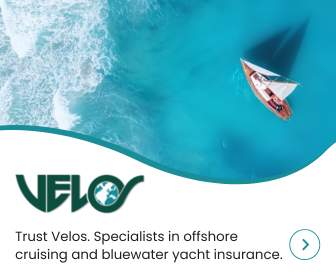Useful Guide to Sailing the German North Sea Coast
Published 15 years ago, updated 7 years ago
Our thanks to Claus Böhlje of SY Kira for this very informative guide to sailing in this area.
General Sailing Information for the German North Sea coast (Borkum-Brunsbüttel, not including the Northern Frisian Islands).
The whole coastal area is ruled by the tide. The difference between High and Low is around 3m.
The strongest winds during the summer normally come from the West. Strong west winds lead to higher water; Strong east winds to lower water. When entering from the sea in between two islands it’s most comfortable to cross the “barre” (Sandbank between the islands) around High-water when there is little or weak current.
Avoid strong winds against the tide and in bad weather you definitely should, especially if you do not know the area. DO NOT try to enter the “Wattenmeer” in between two islands. When doing so, always be close to high-water.
Possibilities when in need of shelter in bad weather are the rivers: Ems, Jade, Weser, and the Elbe.
The Elbe is a very busy and important commercial waterway (leading to Hamburg City). Entering and (especially) leaving it in northern winds of more than a force five is very uncomfortable and sometimes dangerous. Strong currents, wind, and sands create a wild and more or less unpredictable wave picture.
The Weser is a lot easier to enter, but also has a lot of traffic and sands. Same for the Ems with the negative aspect, that the safe port EMDEN is far inland.
In my opinion, the best way to stay safe and get ashore in bad weather in that area is the river Jade which leads to Wilhelmshaven. In strong winds, it’s hard to enter Hooksiel!!! Once inside the Jade, you can get a radar-assistance provided by Jade-Approach-Radio.
When arriving at Wilhelmshaven you have two choices: Entering into the inside part of the port via “Neuer Vorhafen” and lock or go “around the corner” to “Nassauhaven”.
Sailing in the “WATTENMEER”
Sailing this area is a unique and interesting thing to do. Large parts dry out during low tide; there is plenty of marine wildlife (seals, plenty of birds, nice shrimps……).
Planning your trip “behind the islands” you really have to integrate the tides and the currents in your calculations. Normally (of course depending on your speed and draft) you should be able to take two “Wattenhochs” (flattest part, where two currents meet – normally dries out) in one high-water.
If you don’t need supplies and have a good weather it’s a lot nicer (and cheaper) to use your anchor instead of harbors’. If you can dry out it’s perfect, but you will find nice spots, where you can anchor very sheltered and remain afloat.
Very nice and popular spots: Wangerooge Eastend, Old ferry port Spiekeroog (south of new harbor).
In the whole area respect nature and avoid unnecessary noises. Respect the Zones (Reserves).
In emergency call “Bremen-Rescue-Radio” on VHF channel 16.
Drinking water:
Normally, in most ports in Germany, the taps and hoses for water will have a sign “not drinking water”. The reason for this is, that there is a certain law about supplying drinking water. The requirements are nearly unaffordable for a small harbor, so they just put up this sign, but nearly everyone uses the water for drinking water……so!
Related to following destinations: Germany




